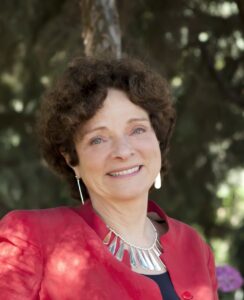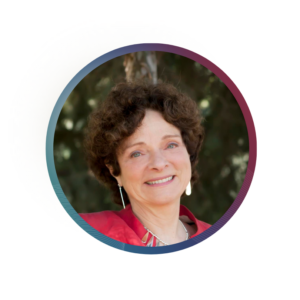

What Happens to Muscles as We Age?
Dr. Helen Blau’s research provides fresh insights into age-related muscle loss and suggests a potential opportunity to develop a treatment.
January 12, 2024

Helen Blau, PhD
Helen M. Blau is the Donald E. and Delia B. Baxter Foundation Professor and Director of the Baxter Laboratory for Stem Cell Biology at Stanford University. Dr. Blau is widely recognized for the identification of regulators that enhance muscle stem cell function in muscle wasting disorders and aging.
Have you ever hiked up a steep path you have easily walked many times before, but had to stop and catch your breath? You sip some water, and suddenly it hits you – you’re not as young as you used to be. Your muscles ache more than they used to, and you wonder if you’re starting to feel the effects of age.
Muscle loss is a natural part of aging, and it can have serious consequences for our health and quality of life; we become more prone to falls, fractures, and other injuries that can limit our mobility and independence. In fact, without regular exercise, it’s estimated that muscle strength and mass can decline by some 10 to 15% per decade after the age of 50.1,2,3,4
The good news is that there are research-backed actions we can take to mitigate the effects of time on our muscles. Dr. Helen Blau has devoted her career to unraveling the mysteries of muscle cell regeneration during exercise and injury, an area of research that was once shrouded in obscurity.
Muscle stem cells play a vital role in the growth and repair of skeletal muscle tissue throughout a person’s life. Under normal circumstances, muscle stem cells are situated alongside the muscle fibers and remain inactive. However, when inflammation arises from intense exercise or injury, these muscle stem cells are triggered into action and begin repairing the microscopic damage. Many of us may be inclined to reach for an ibuprofen like Advil or Motrin to soothe the ache from the inflammation, but Dr. Blau cautions against this practice.
According to her team’s study in mice, non-steroidal anti-inflammatory (NSAID) drugs like ibuprofen can actually hinder the body’s ability to repair damage. Specifically, these drugs reduce the activity of the signaling pathway for muscle stem cells to respond to injury damage, delaying the healing process.5

Training Tip
Studies in humans have shown that large doses of NSAIDs after training can reduce muscle protein synthesis and hypertrophy while lower doses have little to no effect on muscle hypertrophy.6,7 “No pain. No gain,” said Dr. Blau. “If you block the inflammatory pathway by taking an NSAID right after you workout, then you might be reducing the good you did.”

Skip the NSAIDs if you can avoid them. Adobe Photos
The most recent breakthrough from Dr. Blau’s lab involves muscle stem cells and the effects of aging. As we grow older, our muscle stem cells gradually lose their ability to function, meaning they don’t renew muscle tissue as well as their youthful counterparts.
“When you are younger, you can build muscle mass pretty easily,” said Dr. Blau. “After the age of 50, it’s really difficult to build muscle mass. You work hard just to maintain it.”
However, a discovery by Dr. Blau’s team may hold the key to muscle regeneration in older individuals. Her team identified a critical enzyme, which she dubbed a “gerozyme” (gero- for “old age” and -zyme for “enzyme”), that becomes more abundant as we age.8 The gerozyme degrades a hormone-like substance called prostaglandin-E2 (PGE2), one of the key factors in this muscle repair, reducing its abundance.9 The essential role of PGE2 in muscle function became profoundly clear where her team over-expressed – or artificially increased – the gerozyme in young mice for one month. There was a dramatic loss of muscle mass and muscle strength in young mice.
Another way to think about this research is to imagine the gerozymes as unwanted guests at a construction site, making it difficult for the local workers to get their job done. When Dr. Blau increased the number of these unwanted guests, the construction site fell into greater disrepair. This gerozyme discovery is remarkable in its own right, but Dr. Blau’s work doesn’t stop there.
When Dr. Blau’s team inhibited – or decreased the activity of the gerozyme by treating the aged mice for one month with a small molecule inhibitor called SW033291 (SW), levels of PGE2 were boosted back to youthful levels. The PGE2, in turn, stimulated muscle stem cells to multiply, leading to the creation of new stem cells to replace damaged tissue. In addition, the PGE2 acted directly on mature muscle fibers, increasing energy stores, muscle mass and strength.
To return to the construction site analogy, this means Dr. Blau’s team found a way to stop the unwanted gerozymes and allow the local workers to have full access to the site again. With the gerozymes reduced, the local workers were able to repair the construction site to its former glory.
Want to learn more about gerozymes?
Look for the term 15-hydroxyprostaglandin dehydrogenase (15-PGDH). That’s the official technical term for the gerozyme in the scientific literature.

After the age of 50, it’s more difficult to build muscle mass than when you were younger. Don’t give up! The health implications of regular exercise are still worth the extra effort. Adobe Photos
The implications of this discovery could be enormous, particularly for the millions of individuals who suffer from muscle wasting due to disuse, disease, or age-related sarcopenia.
Dr. Blau has now founded a biotech company tasked with finding out whether or not a small molecule inhibitor similar to SW could work in humans. The goal is to test her treatment in human clinical trials and ultimately develop a drug to increase muscle strength.
“I could envision this drug treatment being useful after someone breaks a hip or they have been confined to bed, forced to be immobile and not use their muscles,” said Dr. Blau. “During that period of time, you lose your muscle mass and strength. It’s very hard to get it back, especially when you are older. So if we could help people get back on track, even with a short term treatment with this drug, I think that would be a real benefit to quality of life or healthspan, and a benefit to society in general.”

Flash Q&A with Helen Blau
How often do you strength train?
I work with a personal trainer three times a week.
What type of cardiovascular exercise do you engage in?
I also ride a Peloton about three times a week, swim, and hike.
Thoughts about exercise and aging?
I’m much more rigorous about my exercises than I used to be because I know I have to work hard to maintain my muscles. Not only is it harder to build muscle, but it’s also easier for my muscle to slip away.
Get Deeply Researched Insights on Human Performance
Join our mailing list to get actionable performance tips and nuanced explanations of the science.
Citations
- von Haehling, S., Morley, J. E., Anker, S. D. (2010). An overview of sarcopenia: facts and numbers on prevalence and clinical impact. J Cachexia Sarcopenia Muscle, 1(2), 129-133. https://doi:10.1007/s13539-010-0014-2.
- Wilkinson, D. J., Piasecki, M., Atherton, P. J. (2018). The age-related loss of skeletal muscle mass and function: measurement and physiology of muscle fiber atrophy and muscle fiber loss in humans. Ageing Research Reviews, 47, 123-132. https://doi:10.1016/j.arr.2018.07.005.
- Hughes, V. A., Frontera, W. R., Wood, M., et al. (2001). Longitudinal muscle strength changes in older adults: influence of muscle mass, physical activity, and health. The Journals of Gerontology: Series A, 56(5), B209–B217. https://doi.org/10.1093/gerona/56.5.B209.
- Goodpaster, B. H., Park, S. W., Harris, T. B., et al. (2006). The loss of skeletal muscle strength, mass, and quality in older adults: the health, aging and body composition study. The Journals of Gerontology: Series A, 61(10), 1059–1064. https://doi.org/10.1093/gerona/61.10.1059.
- Ho, A. T., Palla A.R., Blau, H.M. (2017). Prostaglandin E2 is essential for efficacious skeletal muscle stem-cell function, augmenting regeneration and strength. Proceedings of the National Academy of Sciences, 114(26), 6675-6684. https://doi:10.1073/pnas.1705420114.

When will there be clinical trials on inhibiting the effects of gerozymes?
Dr. Blau’s research on gerozymes was performed in mice, and we don’t know yet if it works the same way in humans. Intermediate animal studies have been successfully performed, which are necessary before running human clinical trials. Phase 1 clinical trials will determine safety before we test the efficacy of treatments in older individuals. Given the animal results, such clinical trials may soon be underway.
- Bateman, L. S., McSwain, R. T., Lott, T., et al. (2023). Effects of ibuprofen on muscle hypertrophy and inflammation: a review of literature. Curr Phys Med Rehabil Rep, 11, 43-50. https://doi:10.1007/s40141-023-00381-y.
- Lilja, M., Mandić, M., Apró, W., et al. (2018). High doses of anti-inflammatory drugs compromise muscle strength and hypertrophic adaptations to resistance training in young adults. Acta Physiol (Oxf), 222(2), e12948. https://doi:10.1111/apha.12948.
- Porpiglia, E., Blau, H. M. (2022). Plasticity of muscle stem cells in homeostasis and aging. Current Opinion in Genetics & Development, 77, 101999. https://doi:10.1016/j.gde.2022.101999.
- Palla, A. R., Ravichandran, M., Wang, Y. X., et al. (2021). Inhibition of prostaglandin-degrading enzyme 15-PGDH rejuvenates aged muscle mass and strength. Science, 371(6528), eabc8059. https://doi:10.1126/science.abc8059.
Playbook Terms of Use & Copyright
©2023-2024



